Simple, Science-Based Tools to Calm Your Mind, Regulate Your Emotions, and Strengthen Your Nervous System
Have you ever felt a moment — even just a second — when everything inside you moved in the same rhythm?
Your breath slowed.
Your mind softened.
Your heartbeat steadied.
That sense of internal harmony isn’t an accident.
It’s heart–brain coherence — a natural state where your emotional center (the heart) and your cognitive center (the brain) communicate in balance.
In coherence, you think more clearly.
You recover from stress more quickly.
You feel grounded, centered, and emotionally steady.
And the most important thing to know?
You can train your body to enter that state anytime.
Below is a practical guide to building heart–brain coherence — using science-based techniques that wellness practitioners, clinicians, and neuroscience researchers rely on every day.
Understanding Heart–Brain Coherence
Heart–brain coherence occurs when your heart rhythms, brain waves, and nervous system fall into a synchronized, wave-like pattern. Instead of sending scattered or chaotic signals, the heart generates a smooth, ordered rhythm that the brain immediately responds to.
Research from the HeartMath Institute, the National Institutes of Health, and major psychophysiology journals shows:
- Coherence increases heart rate variability (HRV)
- HRV is strongly linked to emotional resilience
- Positive emotions like gratitude create smoother heart rhythms
- Smooth heart rhythms improve cognitive clarity, focus, and mental performance
In short:
When the heart communicates safety, the brain shifts into calm.
When the heart communicates stress, the brain shifts into survival mode.
Understanding this biological connection creates the foundation for every technique that follows.
From Understanding to Practice
Coherence is trainable — and your body responds more quickly each time you practice.
The following techniques build from simple to advanced, moving you from awareness → experience → mastery.
Each one is evidence-based, easy to practice, and used within Quantum Clinic’s therapeutic approach to coherence.
1. Heart-Focused Breathing (The Foundation)
Heart-focused breathing is the most direct and accessible way to create coherence.
How to Practice:
- Sit comfortably and relax your shoulders.
- Bring your attention to the center of your chest.
- Inhale for ~5 seconds, exhale for ~5 seconds.
- Imagine your breath flowing through your heart.
- Continue for 2–3 minutes.
As breathing stabilizes, your heart rhythm smooths and the vagus nerve begins to carry coherent signals throughout the body.
This technique alone can create a measurable shift in HRV.
Once it feels natural, you can build upon it.
2. Quick Coherence® Technique (Breath + Emotion)
Developed by HeartMath, this technique adds the emotional component that accelerates coherence.
Three Steps:
- Focus on your heart.
- Breathe through your heart (slow, even breaths).
- Activate a positive emotion.
Think of a person, memory, or moment you deeply appreciate.
The combination of steady breath + elevated emotion produces the signature coherent waveform seen in HRV biofeedback.
This is where the physiological shift becomes unmistakable:
mental calm, emotional warmth, and heightened clarity.
3. Gratitude Practice (Sustaining Coherence)
Gratitude is coherence’s emotional anchor.
When practiced consistently, it:
- Reinforces positive HRV patterns
- Lowers sympathetic stress responses
- Increases emotional resilience
- Strengthens vagal tone
Ways to Practice Daily Gratitude:
- Morning journaling: Write three things you’re grateful for.
- Midday check-in: Pause and appreciate one person or moment.
- Evening reflection: Revisit a meaningful moment from your day.
Even a few seconds of genuine appreciation can shift the heart rhythm into coherence.
4. Biofeedback Training (Measuring Progress)
Biofeedback bridges science and self-awareness.
Devices that monitor HRV allow you to watch coherence happen in real time — and help you learn how to sustain it longer.
Benefits of HRV biofeedback include:
- Immediate insight into emotional triggers
- Real-time guidance for breath pacing
- Greater internal awareness
- Faster mastery of coherence
At Quantum Clinic, HRV biofeedback is frequently paired with floatation and scalar frequency sessions to enhance nervous system regulation.
5. Meditation & Mindful Presence (Integrating Coherence into Life)
Meditation turns coherence from a technique into a lived experience.
You aren’t trying to control your heart or breath — you’re attuning to them.
Ways to Deepen Coherence Through Mindfulness:
- Visualize breath and heartbeat as synchronized waves
- Focus on sensations in the chest
- Practice slow, heart-centered breathing during stressful moments
- Use sound, silence, or body awareness to stay present
Studies in Frontiers in Psychology show that mindfulness not only increases HRV, but strengthens the neural pathways responsible for emotional regulation.
Coherence becomes both a state and a skill.
How Quantum Clinic Enhances Coherence
Every therapeutic experience at Quantum Clinic Los Angeles is designed to support heart–brain synchronization, emotional regulation, and deep nervous system healing.
Floatation REST Therapy
In the silence and weightlessness of the float environment, your heart rate, breath, and brain waves naturally fall into alignment.
This is one of the most effortless states of coherence you can experience.
Scalar Energy Sessions
Scalar frequencies create a field of harmonic resonance that supports cellular realignment and emotional calm — ideal conditions for coherence.
Coherence Healing Experiences
Guided group meditations blend intention, frequency, and breath to strengthen your ability to access and sustain coherence on your own.
Every visit becomes both a reset and a reminder: your body knows how to return to balance.
Bringing It All Together
Heart–brain coherence is more than a technique — it’s a relationship between awareness and physiology.
Each breath, each moment of appreciation, each pause in your day is a chance to reconnect with yourself.
You can begin right now:
Place your hand on your heart.
Breathe slowly.
Feel your chest soften.
Let your thoughts quiet.
That’s coherence.
To experience deeper states of coherence — supported by frequency, floatation, and trauma-informed care — visit Quantum Clinic Los Angeles, where science and stillness meet.
👉 Book your coherence-enhancing session →

